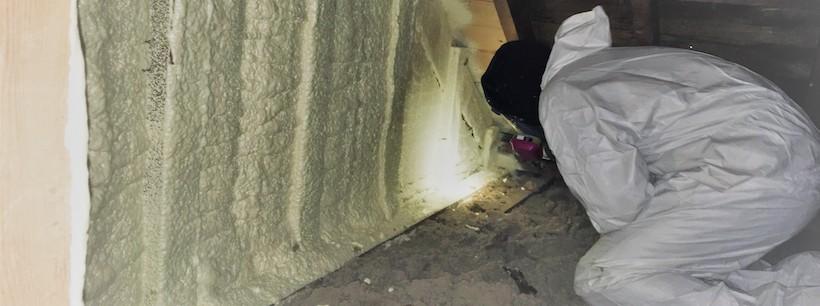- Residential
- Commercial & Municipal
- Building Consulting

Depending on the age of a building and the conditions we find during blower door testing or investigation, we may suggest insulating as another way to improve energy efficiency and occupant comfort. Insulation can work well for sound mitigation as well in a bonus room or when living near an outdoor source of noise.
A properly insulated building will show decreases in energy cost and will improve the performance of HVAC equipment. A well insulated building is building easier to heat.
Not all insulation is created equal. As part of the process, we will help you understand the benefits of the types of insulation available for your particular needs.

Celulose Insulation
Cellulose Insulation is made from recycled wood fiber, primarily newspaper making it a greener product. Specifically treated and processed, cellulose fiber is light and fluffy. The natural characteristics of cellulose traps air within and between the fibers, providing superior insulating qualities. Our product is treated with Borate which is a natural pest and mold deterent which also makes the product flame resistant.
It can be “dense packed” in confined space under high pressure to create a solid mass with the highest R-value. When blown into place under a specially designed high pressure installation process, the tiny cellulose fibers flow around pipes and wiring, sealing cracks and corners, forming a felt-like bond.
Cellulose insulation provides complete coverage, blocking more air infiltration, keeping your interior environment more consistent while using less heating or cooling energy. Cellulose insulation is usually the best, most efficient, safest, healthiest and cost effective insulation for your home or commercial building.
2-Part Foam
This is a polyurethane product that clings to and expands on the surface onto which it is sprayed.
Often called spray foam insulation, this product reacts onsite and expands into spaces being insulated.
It is good for difficult and hard to reach spaces.
As it expands, it tends to fill gaps and cracks, improving the air barrier.
Offering both open and closed cell foams. Depending upon the application we may suggest one over the other.
Fiberglass
Fiberglass, although popular, is the least valuable of the options available. It will work effectively in an airtight six-sided box - 4 sides, a top, and a bottom. It only gets about one quarter of the insulting R-value when it is in an open space because the air is able to move through it easily. It is fibrous...glass.
Unlike cellulose insullation and 2-part foam insulation, fiberglass insulation does not cover the area as well, allowing cracks and gaps which allow heat to leak through. Similarly, fiberglass does not have the structure to prevent air flow. It is used as a filter in some cases, such as cigarette filters and furnace filters.
Contact us
Testimonials
Accurate-Airtight Exteriors more than exceeded our expectations with the air sealing and insulation project they completed for us.
Mount Pleasant Home, Dubuque, IA
